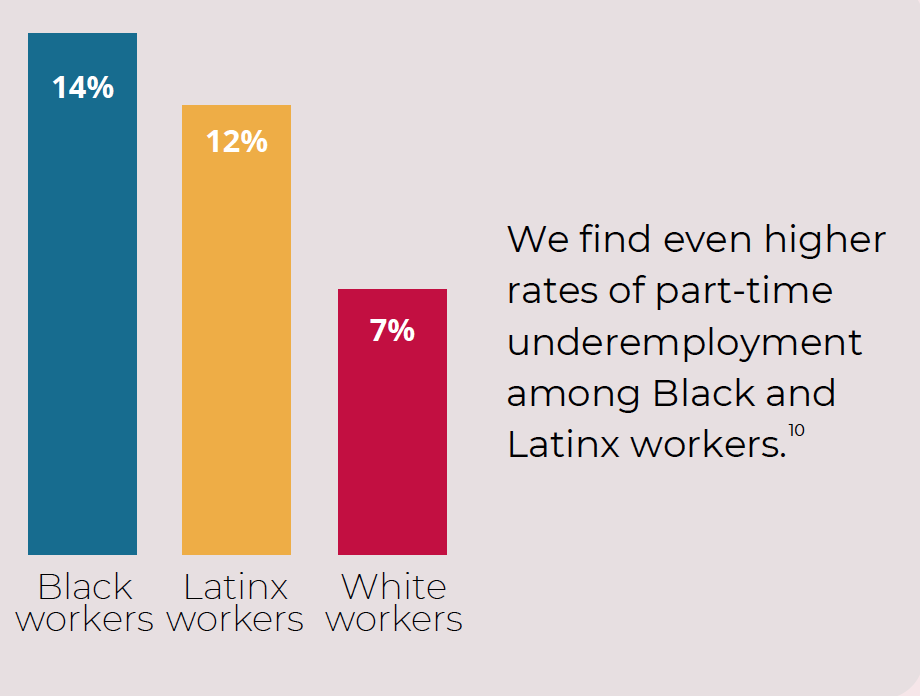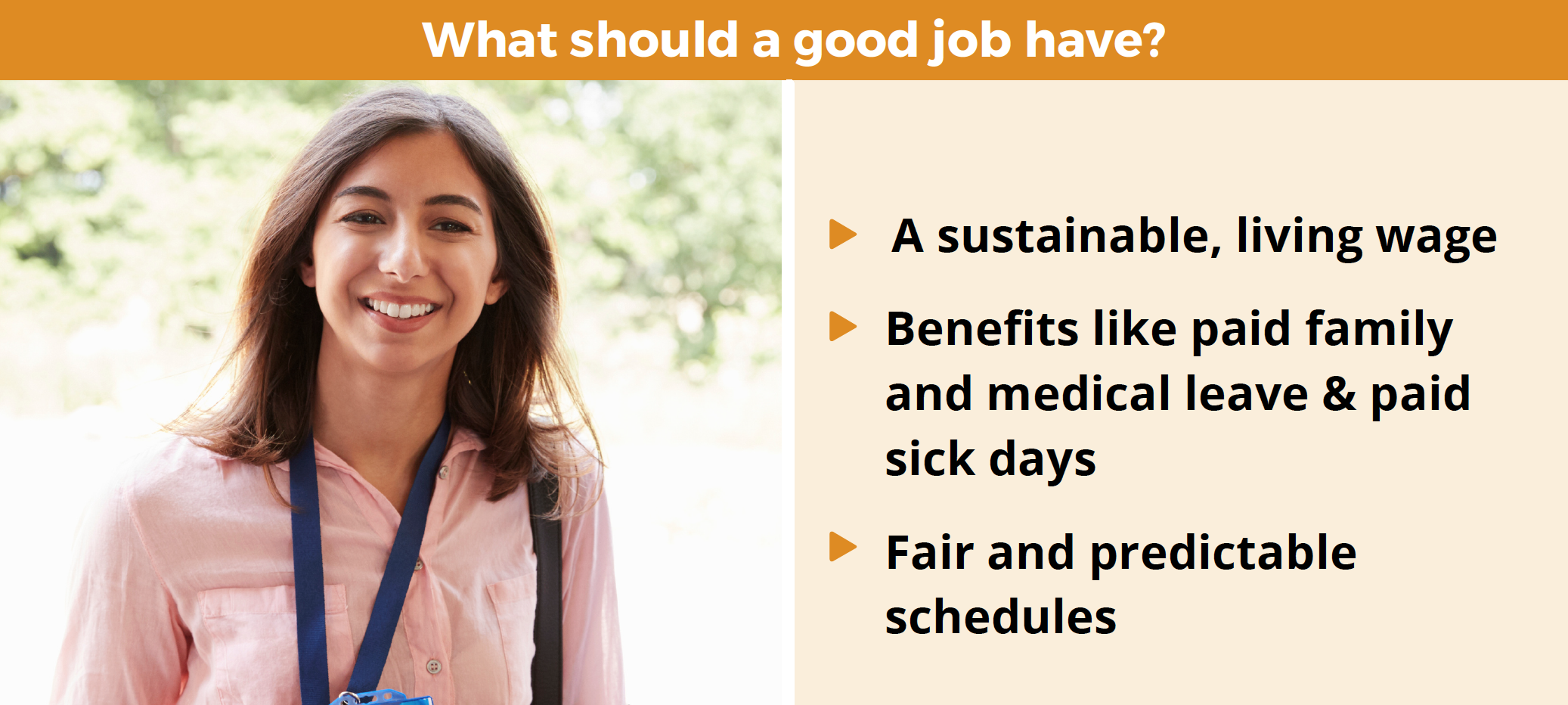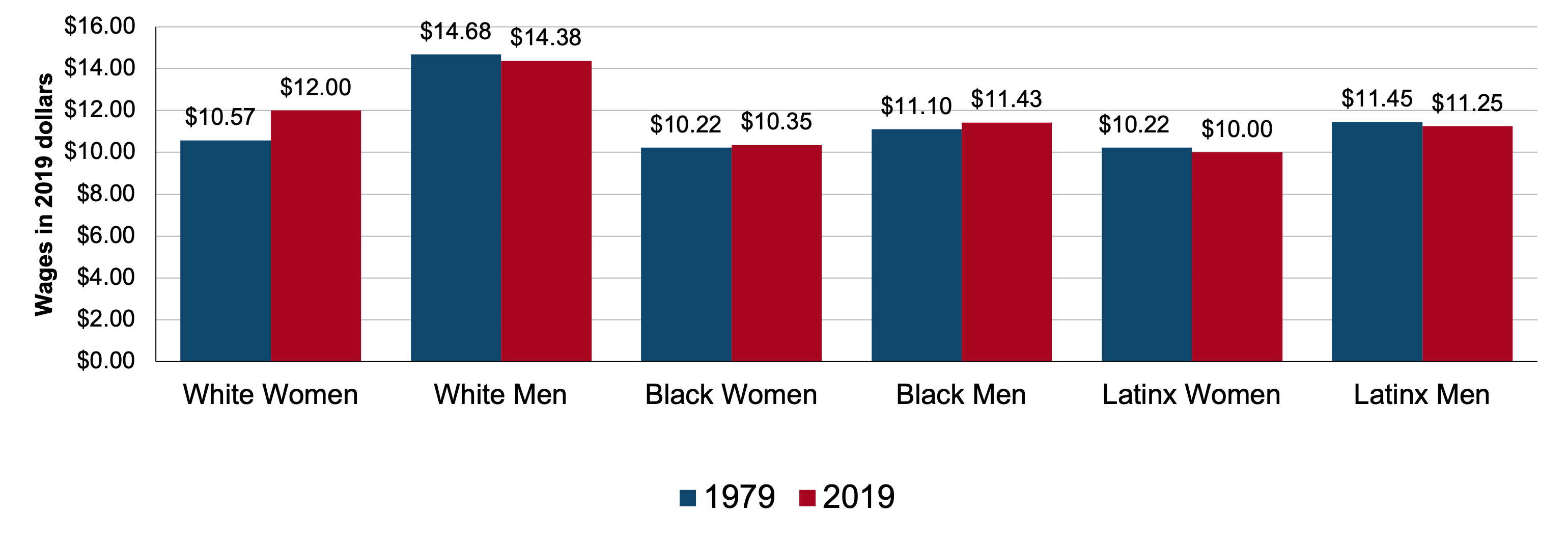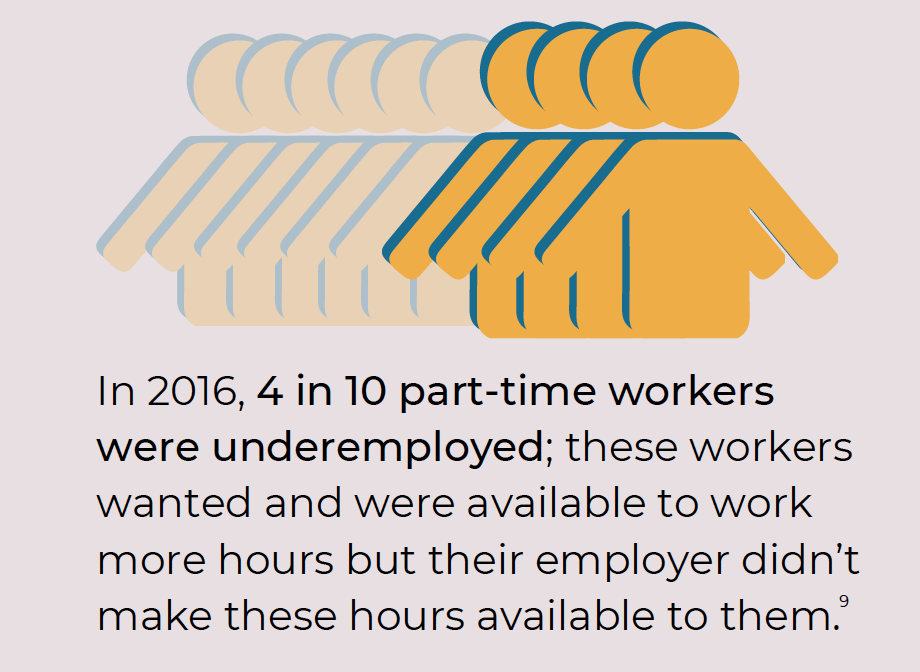The Struggles of Low-Wage Work
Millions of workers have jobs with low pay, shifting schedules, few if any benefits, and limited opportunities for advancement. The COVID-19 pandemic and economic crisis undeniably impacted workers paid low wages the hardest, as millions lost jobs or income, while others continued to work in essential jobs, often at great risk to themselves and their families. Women—and especially women of color—were disproportionately likely to be employed in jobs paying low wages before the pandemic and have suffered the greatest economic impacts of the pandemic.
Workers in low-wage jobs are more likely to be employed in industries with hazardous working conditions and lax enforcement. Women and people of color are disproportionately likely to have jobs paying low wages. Despite some economic growth after the Great Recession and now facing an uncertain recovery, wages have remained low. A worker A worker being paid median wages did not earn much more in 2017 than 1979 when adjusted for inflation.
Wages for Workers in the Bottom 10th Income Percentile
In 1979, Black women in the bottom 10th percentile earned today’s equivalent of $10.22/hour, in 2019, they earned only $10.35. Latina women’s wages decreased from $10.22/hour in 1979 to $10.00 in 2019. Simply put, in 40 years, nothing has changed for the workers whose vital labor makes it possible for us all to flourish.
COVID-19 and Workers
At the start of the COVID- 19 pandemic, 20.5 million workers lost their job in April. During the COVID-19 recession, workers of color saw higher rates of unemployment compared to white workers. The rate of housing insecurity and food insecurity increased to 10.3 and 7.3 percent, respectively.
Part-time and Involuntary Part-time Work

Part-time workers are paid 29.3% less in wages per hour than full-time employees from similar backgrounds. In addition to low pay, part-time workers also have limited benefits and support such as health insurance, retirement, or paid leave.
Job Scheduling
Unstable schedules make it difficult for workers to arrange transportation, attend education and training programs, hold a second job, manage their budgets, obtain quality child care, and maintain a stable income.
Unpredictable scheduling can lead to:
- benefit ineligibility
- poor mental health
- financial insecurity
In 2020, 16% of employees had a work schedule that varied based on their employer’s needs. 10% of employees had a schedule that varied at their own request. Collectively, just over one-fourth of employees had a varying work schedule.
30% of workers with a schedule that varied based on their employer’s needs said that they were either just getting by or finding it difficult to get by. This compares with 18% of workers with a fixed schedule or with a schedule that they control.
When compared to workers with fixed schedules, approximately, 15% of workers who had variable schedules were underemployed.
Access to Health Care Benefits
73% of the workers earning lowest wages did not have access to health care through their job.
Access to Paid and Unpaid Leave
In 2020, less than 10% of workers employed in sectors paying low wages had access to paid family leave, and less than 50% of workers had access to paid sick leave.
60% of workers paid low wages who may desperately need to take leave are not covered by or eligible for the Family and Medical Leave Act (FMLA).
More than two-thirds of low-wage private sector workers— those earning less than $10.49/hour—do not have access to paid sick days, compared with only 10% of those earning $30.61/hour or more.
Domestic Workers and COVID-19
There are over 2.2 million house cleaners, care workers, and nannies working in private homes across the country. Sadly, many of these workers were stationed on the frontlines of the pandemic, risking their heath and livelihoods with the least protections and some of the lowest pay.
A recent survey of domestic workers during the onset of the pandemic found that:
- 84% of workers reported they either would not be able to afford food
- 55% were unable to pay April’s rent
- 77% feared being evicted


